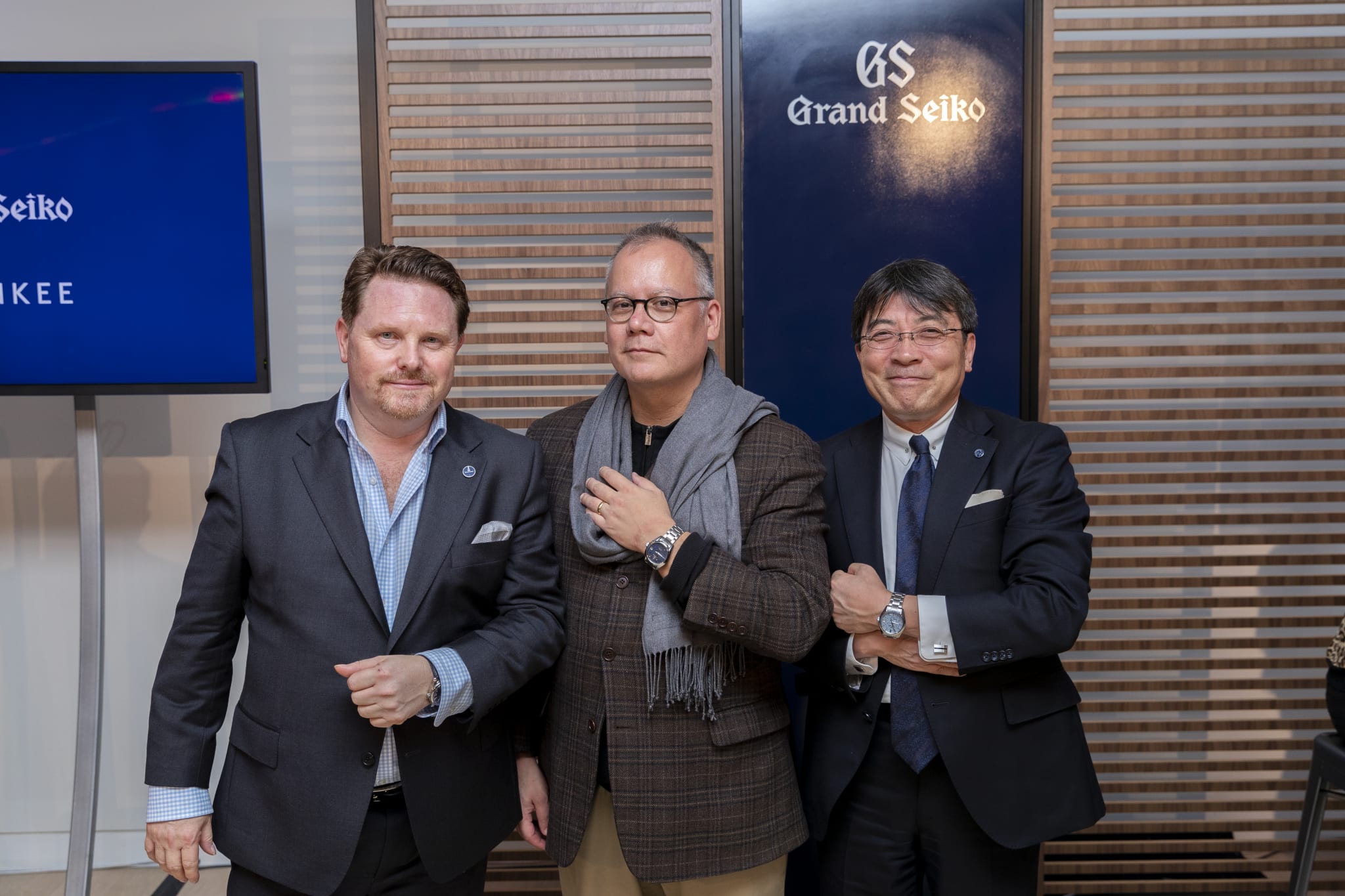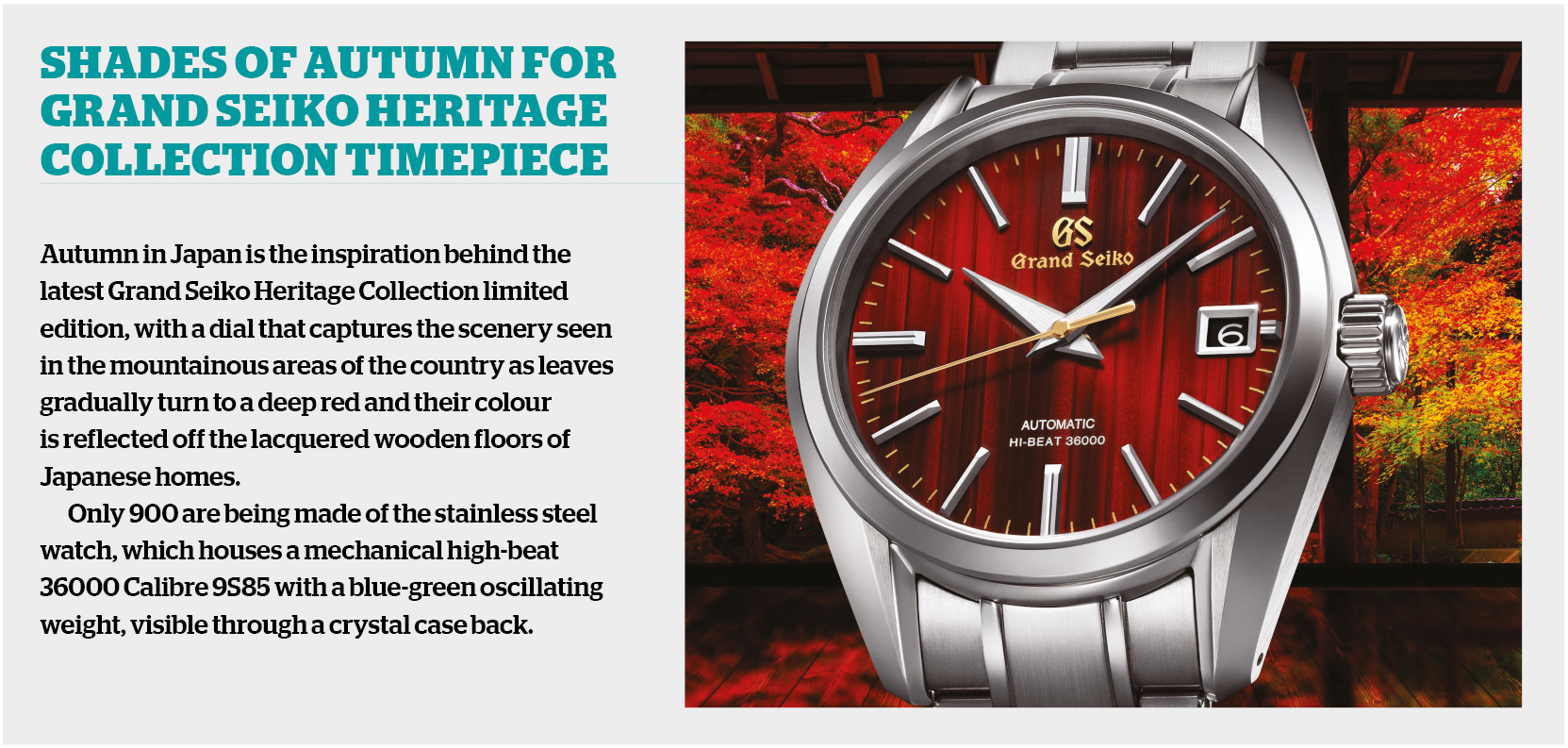Although Grand Seiko was born back in 1960, it only started being sold outside Japan in 2010 and got its first corporate office outside of Asia just last year. Despite its relative youth, the luxury watchmaker is rapidly establishing itself as a collectors’ favourite and giving many venerable Swiss marques a run for their money, as Rob Corder discovers.
Grand Seiko will be celebrating its 60th anniversary next year, but you could be forgiven for wondering where it was for the first 50 of those years because, until 2010, it was marketed exclusively to customers in its native Japan. There was a small base of enthusiasts around the world who spoke with reverence about the brand and reveled in having penetrated what they saw as some sort of secret Japanese society.
Word of mouth from that secret club was more influential than its members might have realised. A small but sustained groundswell of demand outside Japan began to develop, and encouraged Grand Seiko to start preparing for exporting.
There were plenty of naysayers in Tokyo ahead of Grand Seiko’s launch in 1960. These were pre-quartz days, and Seiko was already making successful mechanical watches like the Crown. There was certainly space above Seiko for a new, more luxurious and more accurate brand, but that would run headlong into competition with Swiss manufacturers with centuries of history behind them.
Undaunted, the company created a separate team that began development of its own movement. Its first output was the caliber 3180, accurate to within +12 to -3 seconds a day and with a power reserve of 45 hours.
Four years later, in 1964, the team released what it believed was the “ideal” watch. It was practical, with water resistance to 50 metres, and useful because it was given a date function for the first time.
With the financial muscle of Seiko behind it, the Grand Seiko team developed rapidly during the 1960s, consistently improving the accuracy of its movements while in parallel perfecting the look and feel of its pieces by developing a set of rules governing proportion, finish and angles.
The quartz revolution swept through Japan in the 1970s, and slowed the development of Grand Seiko because, like the Swiss, it did not know whether to play or pass with the new technology.
It eventually made a quartz watch in 1988, the S5GS, with every component manufactured in house. It even grew its own quartz crystals.
The company continued to invest in quartz, through to the 2000s because it delivered the most accurate timekeepers, while layering ever-greater levels of artistry and finishing into the visible parts of its watches. It was also the technology that Japanese customers demanded, and the company at the time was only manufacturing for its domestic market.
Grand Seiko’s first return to mechanical watchmaking was in the mid-1990s when it released its 9S movement in 1996 and had its accuracy tested and approved by COSC in Switzerland. Three years later, in 1999, the movement that made Swiss watch collectors sit up and take notice — and paved the way for Grand Seiko to go global — was born. The Spring Drive was the result of over 20 years research and development, and took a further five years to be used in a production watch. Grand Seiko Spring Drive, a model using the Caliber 9R65, was released in 2004. The movement combines a traditional mainspring with an electronic regulator, a combination that made the watch more accurate than any purely mechanical watch on the market at the time.
The base architecture has been built on over the past decade so that Grand Seiko Spring Drive watches now come with GMT and chronograph complications.
The look and feel of Grand Seiko’s watches has, arguably, been even more impressive than its movement development and manufacturing. Today’s models are revered by aficionados who marvel at the precision of every facet, every screw and every dial treatment through their jeweller’s loupes.
With collections that rival many of the most respected Swiss watchmakers, Grand Seiko felt it was ready to reach out beyond Japan.
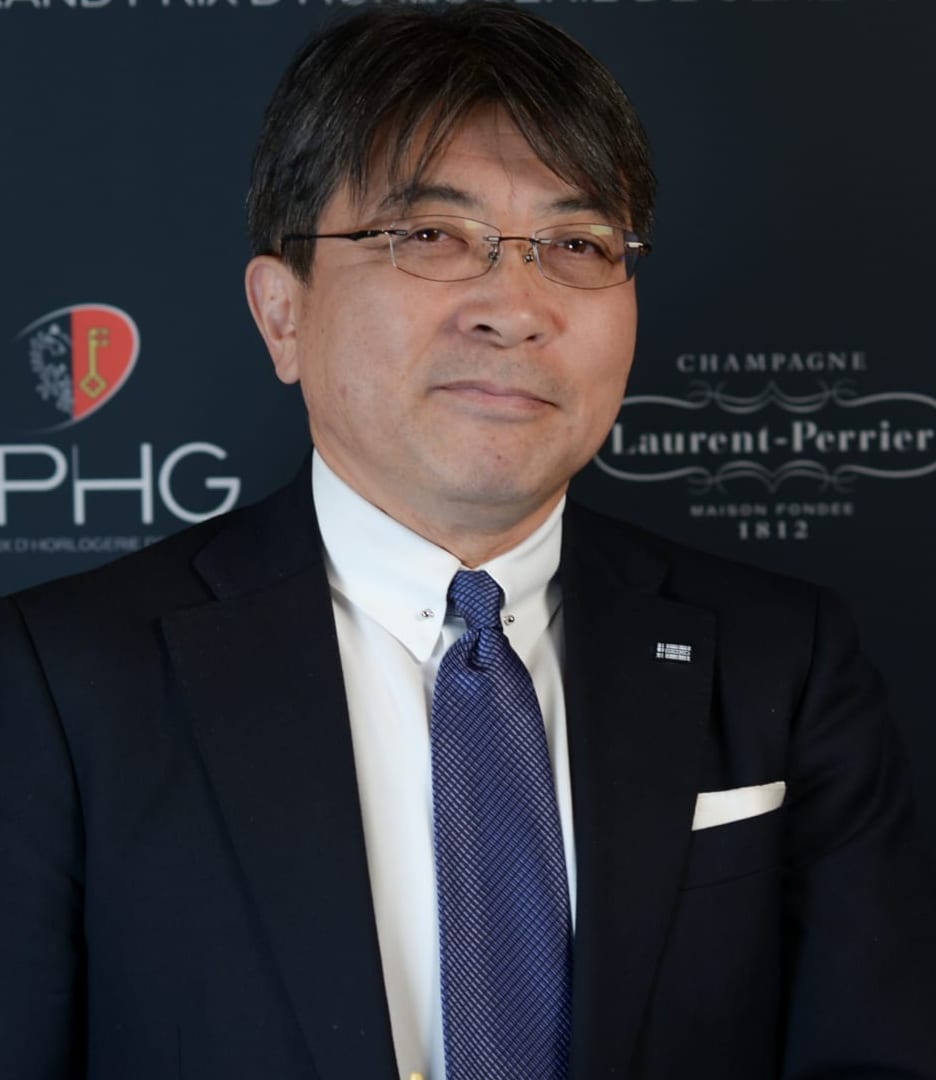
Aiko Naito, chairman and CEO of Grand Seiko Corporation of America and world-wide senior executive vice president of Seiko Watch Corporation, tells WatchPro that early efforts were not promising. “Although we tried to expand the distribution outside of Japan for several years, the progress, especially in the US and Europe wasn’t what we really expected,” he recalls.
It was not until 2010, when Grand Seiko took the fight to the Swiss by exhibiting for the first time at Baselworld, that business started to take-off. Despite experts expressing enormous respect for the watchmaking and artistry of the brand, there was still resistance from the market for Japanese watches. Seiko, with collections costing well under £1000 and mainly manufactured in China, were not in the same space as the Swiss, and Grand Seiko just seemed like a slightly more expensive brand extension. The fact that its watches came from a genuine manufacture was lost on the rest of the world.
“I was a chief finance officer for the Seiko Holdings and at the board meetings they all expressed concern at the huge gap in the perceived brand value among the general consumers. Japanese customers were clear, Western customers were not,” Mr Naito remembers.
Grand Seiko correctly concluded that it needed to get closer to Western markets, so Mr Naito was dispatched to the United States in 2016. The following year, it was announced that Grand Seiko and Seiko would alter their corporate structure so that they worked as two completely independent companies. This gave Mr Naito a fresh story to tell to higher end retail partners that would not have looked twice at stocking lowly Seiko.
“It was much easier for us, we thought, for consumers to understand Grand Seiko as a separate brand,” Mr Naito suggests.
The split from Seiko also meant he could set up a completely new management team for Grand Seiko, including Brice Le Troadec, now president of Grand Seiko in America, who joined from Omega. Together they have built a completely new sales and marketing team that only really started firing on all cylinders in 2018.
In the same year, Grand Seiko hired David Edwards, who was running Richard Mille in London at the time, to head the UK operation.
On both sides of the Atlantic, Mr Naito instigated a multi-pronged strategy. The nascent collector community that were the first fans of Grand Seiko were encouraged to become evangelists. Word started to spread on social media and high profile backers like Hodinkee also got behind the brand. Spreading the word, which was pretty much a one-to-one pursuit ten years ago, was suddenly reaching hundreds of thousands of potential customers.
“One of our strongest assets is those cult followers in the watch community. We were also very active in digital communication as opposed to running big mass advertising. That worked well as a new brand,” explains Mr Naito. There were also engaging stories to tell about the history of Grand Seiko watchmaking that went back to 1960, so there was always something original to say.
It is notable how much the key story of Grand Seiko’s rise over the past two years is less to do with the undeniable quality of its watches, and much more about the execution of its business strategy through a high quality executive team working patiently and persistently to convince tier one retailers they should come on board; not an easy task when most retailers are abandoning marginal brands in favour of blockbusters like Rolex, Patek Philippe, Omega, Cartier and Audemars Piguet.
The association with Seiko was also hurting, particularly in America, according to Mr Naito. “When I moved from Japan to the United States, I spoke with all the local management and they said unanimously that the value of Seiko in the US market is so low, we were in mid-tier department stores and predominantly a $200, $300 brand. So, for us to sell Grand Seiko at such a high price would be difficult. The hurdle would be too high is what all they said,” he reveals.
If the sales and marketing management were so afraid of the step up to Grand Seiko, he needed new management, Mr Naito concluded. “I told them, you are managing the sales team or marketing team, and as management if you are not confident, your subordinates will never make it happen. So please leave. That’s basically what I did.”
Hiring people like Mr Le Troadec from Omega in the USA and Mr Edwards from Richard Mille in the UK gave the company fresh impetus, Mr Naito describes. They immediately found that the mood in the market was more positive than the mood inside the Seiko office. “I was quite surprised and encouraged by very positive comments from people who were outside of our organisation, including our competitors,” he smiles.
Redbar, a US-based collectors’ club with chapters in several UK cities, and Hodinkee, which welcomes around two million visitors to its website every month, were strong advocates (Hodinkee is now an authorised dealer for the brand), and this generated customer demand that started reaching the ears of retailers.
To start with Grand Seiko was accepted by a few independent retailers, many of which had worked with Mr Le Troadec in his Omega days, and the company set out to ensure the brand was a success for them. Staff were given extensive training in how to tell the Grand Seiko story, marketing was targeted at local customers, and the brand was always on hand to help with events designed to excite interest. “Retail staff have to be passionate and knowledgeable about the brand,” Mr Naito says, which is why independents, where he could talk directly to a watch-loving owner, were successfully converted to the Grand Seiko cause first. No expense was spared, with many owners flown to Japan for lengthy inductions into the company’s history and the way the country’s culture infuses its watches.
“I think it worked very well,” Mr Naito suggests. “Once they are trained or come to Japan to experience our brand, they became very passionate about it.”
Mr Naito’s success in the United States did not go unnoticed in Japan, and he was given the task of repeating the trick in Europe. “I became in charge of Europe in April. And my mission is — while I’m still involved in the US operation — I would like to bring the level of our business in Europe into the next stage,” he pledges.
On the day WatchPro meets Mr Naito, Grand Seiko announced it has been given a permanent placement with Watches of Switzerland in London’s Canary Wharf. As key accounts go, none come bigger than Watches of Switzerland, and it has been a target pursued relentlessly by the UK team. Two pop-up installations were created for WoS flagships on Regent Street and Oxford Street in London over the summer, and collector groups were invited to special events at the stores to make sure watches were seen and sold. The company had used the same play in New York, where again it worked with the same retail group on high profile pop-up installations that led to permanent placements.
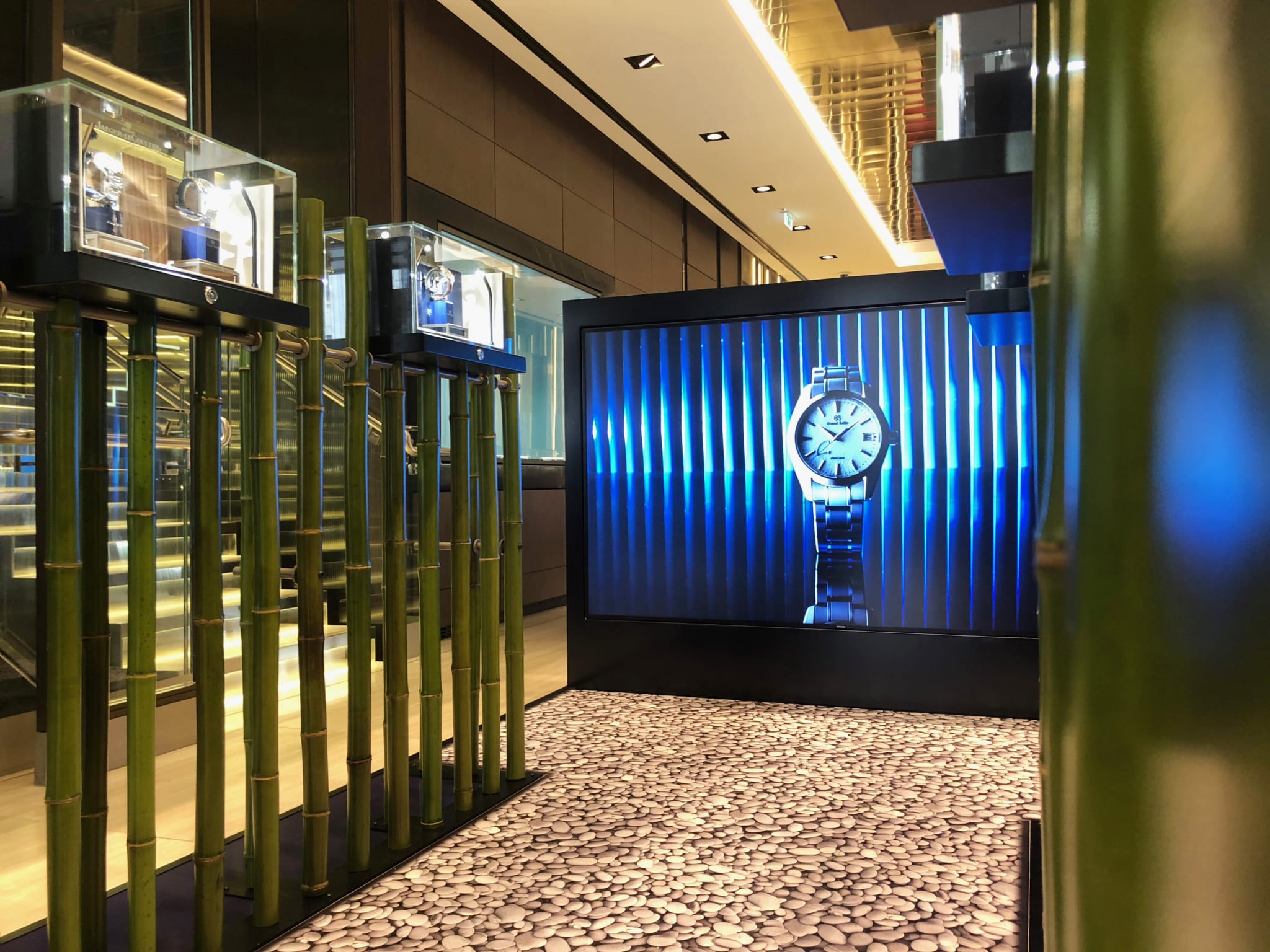
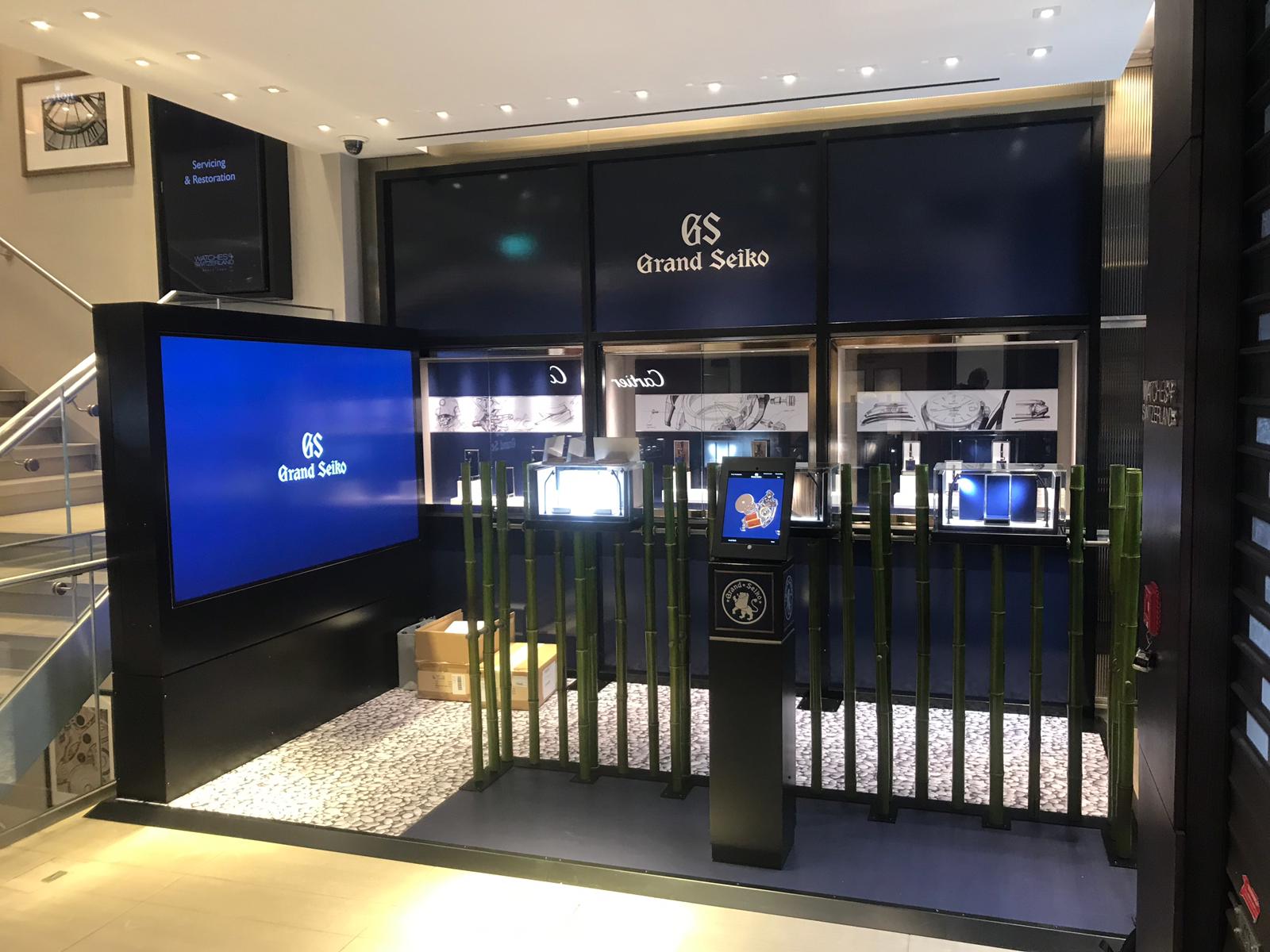
Convincing a retailer called Watches of Switzerland (there is a clue in the name) to stock a Japanese brand must not have been easy, but the relationship is growing fast on both sides of the Atlantic. “I speak to their top management and they are very much interested in developing the relationship in both continents,” Mr Naito reveals.
Mr Edwards tells WatchPro that there are a couple of significant independent retail groups close to signing with Grand Seiko in the UK, but cannot give their names until the ink is dry on the contracts.
That would be significant because, while Watches of Switzerland has 17 showrooms to fill in this country, independents have far fewer doors, floors and windows and every square inch has to earn its keep. As a result, most are trimming the number of brands they stock, making it harder for a challenger brand like Grand Seiko to get space.
“It is getting tougher and tougher, it seems to me, to get any traction. They want to have five brands done well, rather than ten brands done badly,” Mr Edwards admits.
Naturally, retailers need to know whether Grand Seiko will bring sustainable profits, so the brand delivers a package of support designed to ensure the watches sell. “We make sure that they sell through, not that we just sell in. Our new retail partners highly appreciate that we stand alongside to jointly work together,” Mr Naito describes.
It is not enough to just sign up new partners, they need to be the right partners; Grand Seiko needs to be sold alongside Rolex, Omega, Frederique Constant or Breitling, rather than Casio or Citizen. “What is important as a relatively new brand outside of Japan is to have a meaningful presence in those quality top retailers,” Mr Naito replies, adding that the demand from consumers comes from the same people that are buying brands like Rolex.
“This is getting retailers interested in what Grand Seiko brings to them and their clients. They now approach us, which is fantastic,” Mr Edwards adds.
Ultimately, Grand Seiko needs to stand on its own merits, and to make a virtue of being new and different. “The more you learn about our brand, it becomes very unique in your mind, and not really in direct competition with brands like Rolex or Omega. A Japanese brand is different, certainly, and if we can communicate our emotional value and cultural value, I think people can understand,” Mr Naito insists.
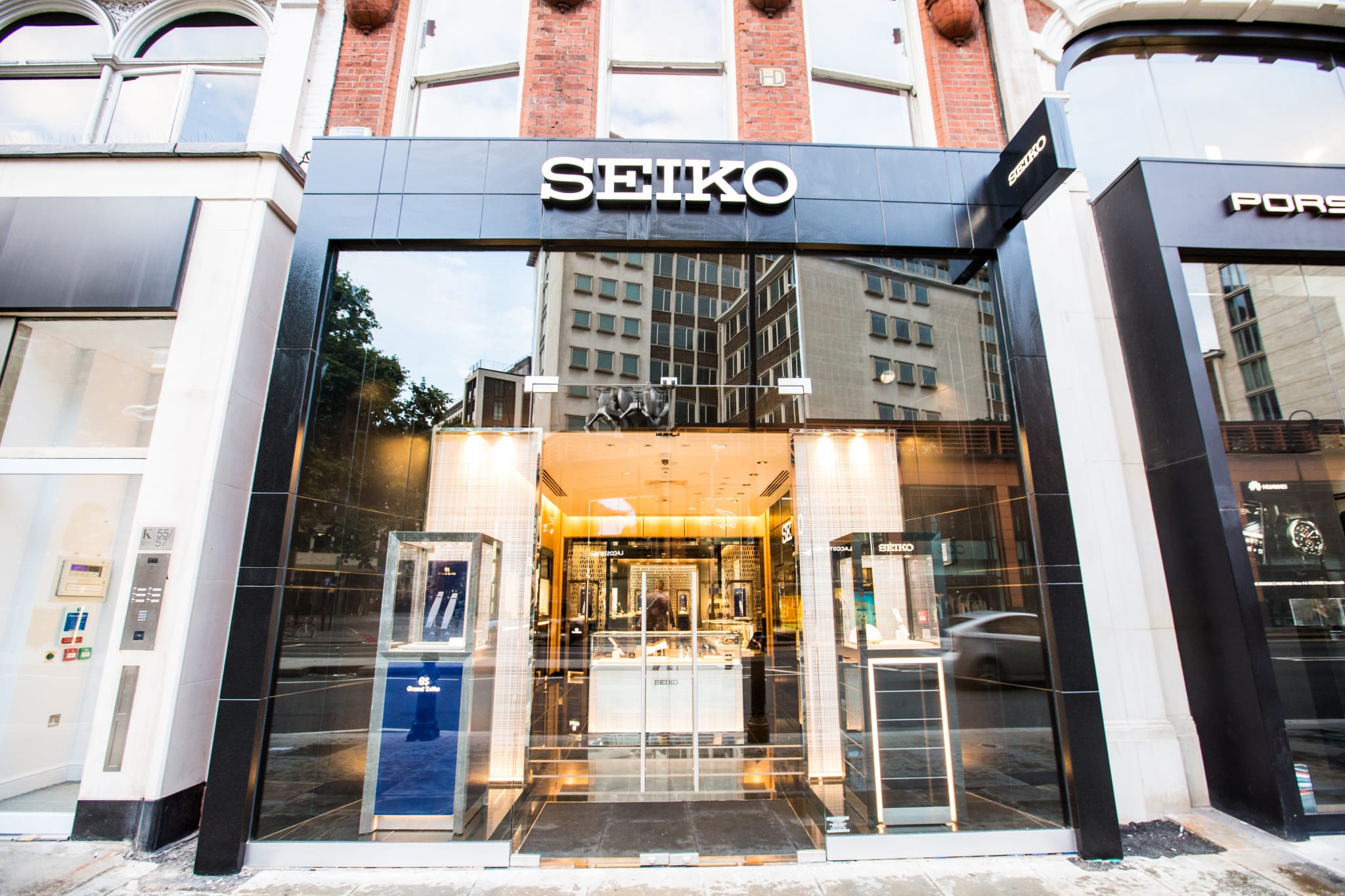
Grand Seiko has its own boutique in London’s uber affluent Knightsbridge district, a stone’s throw from Europe’s biggest Rolex boutique in one direction and Harrods in the other. It is seriously expensive real estate, and the brand is determined to make it pay for itself. Could this bring Grand Seiko into conflict and competition with the very retail partners it is trying to attract?
“That’s a very delicate area and difficult balance to achieve,” Mr Naito concedes.
“We would like to have a presence as a flagship boutique in major international cities like Tokyo, New York, London and Paris because they elevate the brand. And obviously, as a sustainable ongoing business, each one of them has to be profitable,” he adds.
With momentum starting to build behind Grand Seiko in the United States and Britain, the timing could not be better for its big anniversary year in 2020, when the brand turns 60-years-old. Mr Naito will not spoil any surprises, but promises with customary understatement that, “A couple of interesting things are going to happen in 2020.”

